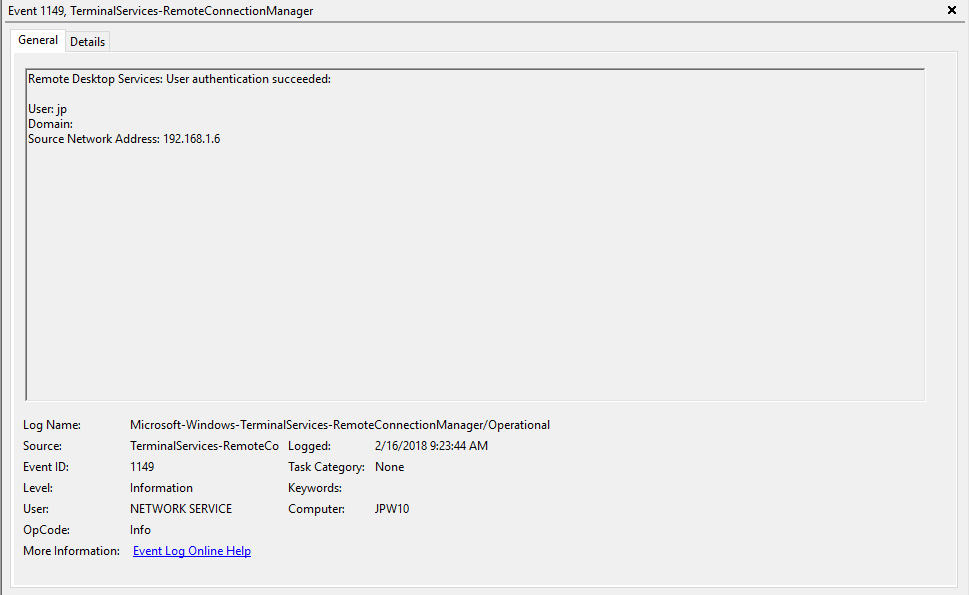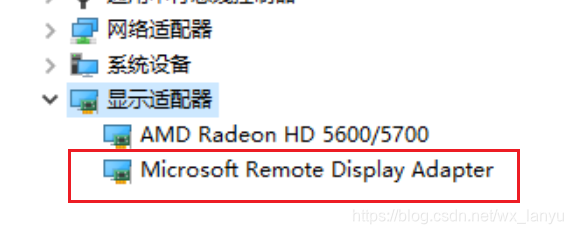Microsoft is currently running at breakneck speed to get Windows Virtual Desktop out the door and into general availability. One big gap that they have right now within WVD is the management piece, including shadowing. Fortunately, they are partnering with third party vendors – my company RDPSoft included – to bridge this gap as WVD comes to market.
Can I Shadow User Sessions in WVD?
A current challenge with Windows Virtual Desktop is how to provide shadowing, management, and remote assistance to users running on Windows 10 Multi Session hosts in Azure. As you may have read in my previous blog post, the WVD Gateway sets up a reverse proxy with the VMs in the host pool and the inbound WVD clients, so there is no access via port 3389 to these hosts. That’s great for security, but complicates management. Now, you COULD turn on port 3389 for a limited time, using the “Just-in-time” feature of Security Center in Azure, to access a specific host in the host pool directly; but Security Center, even at their Standard Pricing tier, costs $15 per VM per month. Yikes!
Shadow An Rdp Session

The Solution – Publish Your WVD Management Tools as RemoteApps in a Single VM Host Pool

C: Users administrator.computermstsc /shadow:3 /control. 5) The other user (user1 in this example) will get a popup called “remote control request” and must press Yes before shadow session will open. 6) The shadow session will open and you’ll be able to view the user1 session desktop screen. In this article, you will learn about the three different options (Quick Assist, Remote Assistance, and Remote Desktop Connection – MSTSC) of how you could remote control – shadow the user session to empower your helpdesk employees in your environment. Note: This article works on bot h Windows 10 Enterprise single and multi-ses sion.
- Remote Desktop Session Shadowing Mode in Windows 10 - Get-ShadowBox.ps1. # This command will shadow a user's Windows 10 system and you will have control.
- Microsoft has decided to revert to the Remote Desktop Shadowing (Shadow Connection) feature on Windows 2012 R2 and Windows 8.1. RDS Shadow also works in the most recent versions of the operating system: Windows Server 2016, Windows Server 2019 and Windows 10. Our IDEAL Administration and IDEAL Remote software allows to manage the Shadow Remote.
- RDP to the server, open task manager, click users, find your user and click shadow session/remote control - something like that. Note 2012 does not allow for this, but 2012 R2 does.
I’m excited to announce that I’ve engineered a much more elegant solution that solves all of these issues AND keeps things secure. I ran a proof of concept setup in my Windows Virtual Desktop environment this week, and it works great. I’ve even attached a small video demonstrating how it works below. How to install omnisphere crack reddit. Here’s what I did:

- I created a single VM host pool in my WVD environment using the host pool provisioning wizard in Azure. Then, I loaded up our RDS Management Software, RDPSoft Remote Desktop Commander, on this single VM. In other words, this single VM will serve as a WVD “Management Application Hub” where all my WVD management tools will live. Do keep in mind the number of admins/help desk users that will be connecting to this VM to run management/remote assistance tools, so you can size it appropriately in terms of vCPUs and Memory.
- When I provisioned this WVD management host pool, I connected it to the same VNet in Azure that houses my other WVD host pools and AAD-linked Active Directory VM. Doing so allows the internal traffic necessary to support management, monitoring, and shadowing between my WVD management server running Remote Desktop Commander, and the other VMs in the host pools.
- To facilitate management and shadowing with Remote Desktop Commander, I enabled the Remote Registry Service on all Windows 10 Multi Session VMs that I planned to manage. I also turned on the Remote Service Management exception in the Windows Firewall on each host, and verified that the Remote Desktop and Remote Assistance firewall exceptions were already enabled.
- I then ran the RDS Management Delegation Wizard in Remote Desktop Commander to delegate specific RDS/WVD management rights (like shadowing) to non-admin accounts in my AAD-linked domain.
- Finally, I installed and imported the Windows Virtual Desktop Management Powershell Library (Microsoft.Rdinfra.Rdpowershell.Dll) in order to publish Remote Desktop Commander as a RemoteApp on my single VM WVD Management Hub. Here are the cmdlets I ran:
Powershell Cmdlets I Used to Set Up a Windows Virtual Desktop Shadowing RemoteApp
New-RDSAppGroup MyTenantName MyHostPoolName RemoteDesktopCommander -ResourceType “RemoteApp”
This created a new App Group called RemoteDesktopCommander for all of my RDPSoft WVD Management Tools. Age of empires 2 definitive edition microsoft store. Then, I ran:
Get-RDSStartMenuApp MyTenantName MyHostPoolName RemoteDesktopCommander
Mar 08, 2021 Markdown. Markdown is a lightweight markup language for adding formatting elements to plain text. WebStorm recognizes Markdown files, provides a dedicated editor with highlighting, completion, and formatting, and shows the rendered HTML in a live preview pane. Markdown editing and preview enhancements. With WebStorm 2020.3, we’ve significantly improved the experience of working with.md files. You can now reformat the content of your.md files to be in line with popular Markdown style guides. To do so, press ⌘⌥L / Ctrl+Alt+L. Webstorm markdown.
in order to list all of the installed applications on my virtual machine, so I could find Remote Desktop Commander in the list. Once I wrote down its alias name, I ran:
New-RdsRemoteAppMyTenantName MyHostPoolName RemoteDesktopCommander -Name “Remote Desktop Commander” -AppAlias rdpsoftremotedesktopcommander
…which published Remote Desktop Commander as a RemoteApp in my RDS Management Tools AppGroup. Finally, I ran:
Add-RDSAppGroupUser MyTenantName MyHostPoolName RemoteDesktopCommander -UserPrincipalName helpdeskadminuser@myaadlinkedtenantinazure.onmicrosoft.com
Mstsc /shadow Access Denied Windows 10
once for each admin and help desk user whom I wanted to have access to Remote Desktop Commander for WVD management and shadowing tasks.
The results? Well, see for yourself in this demo. I launch the WVD client, start the Remote Desktop Commander published RemoteApp, review all of the hosts in the various host pools that I imported from Active Directory, and then start shadowing WVD sessions from within my RemoteApp program using Remote Desktop Commander’s awesome SuperShadow feature, all without opening up a single external port to any of my WVD hosts running Windows 10 Multi Session. Amazing stuff – and the only costs are the monthly infrastructure costs associated with this new VM, plus my Premium Management Features license for Remote Desktop Commander.


Rdp Shadow Command
| @ECHOOFF |
| MODE CON:COLS=80 LINES=40 |
| COLOR 1A |
| SETLOCALEnableDelayedExpansion |
| :ENTRY |
| CLS |
| CALL :PRINTBAR |
| ECHO^| RDP Session Shadow Version 2.0 ^| |
| ECHO^| By Craig Crawford ^| |
| ECHO^|------------------------------------------------------------------------------^| |
| ECHO^| This is designed to be used with: ^| |
| ECHO^| * Windows 10 / 2016 and above, ^| |
| ECHO^| * RDP Wrapper Library: https://github.com/stascorp/rdpwrap ^| |
| CALL :PRINTBAR |
| IF [%1][--noping] ( |
| ECHO^| --noping switch enabled. The remote host will not be probed by echo requests ^| |
| ECHO^| before attemping to connect. ^| |
| CALL :PRINTBAR |
| SETNOPING=TRUE |
| ) |
| SET /P PC='Enter PC: ' |
| CALL :PRINTBAR |
| SETCOUNT=0 |
| ECHO Attempting to connect to %PC%.. |
| IF [%NOPING%][TRUE] GOTO NOPING |
| PING%PC% -n 1 -w 100|FIND'Ping request could not find host %PC%'>NUL |
| IF'%ERRORLEVEL%'EQU'0'GOTO FAILED_NOHOST |
| :PING |
| SET /A COUNT+=1 |
| IF'%COUNT%'GEQ'5'GOTO FAILED_NOECHO |
| ECHO Attempting to connect to %PC%. Attempt %COUNT% of 5. |
| PING%PC% -n 1 -w 100>NUL |
| IF'%ERRORLEVEL%'EQU'0' ( |
| ECHO Connected. |
| :NOPING |
| CALL :PRINTBAR |
| ECHO Attempting to display user sessions.. |
| ECHO. |
| QWINSTA /SERVER:%PC% |
| ECHO. |
| SET /P SESSIONID='Enter Session ID: ' |
| MSTSC /v:%PC% /control /shadow:!SESSIONID! |
| GOTO END |
| ) ELSE ( |
| ECHO%PC% failed to respond, trying again in 5 seconds.. |
| TIMEOUT /T 5 /NOBREAK >NUL |
| GOTOPING |
| ) |
| :FAILED_NOECHO |
| CALL :PRINTBAR |
| ECHO Failed to connect to the remote computer: [ %PC% ]. |
| ECHO The remote computer is not responding to ping requests. |
| GOTO END |
| :FAILED_NOHOST |
| CALL :PRINTBAR |
| ECHO Failed to connect to the remote computer: [ %PC% ]. |
| ECHO Unable to find the host's DNS entry. Does it exist? |
| GOTO END |
| :END |
| CALL :PRINTBAR |
| PAUSE |
| GOTO ENTRY |
| :PRINTBAR |
| ECHO |
Rdp Shadow Mode Windows 10
